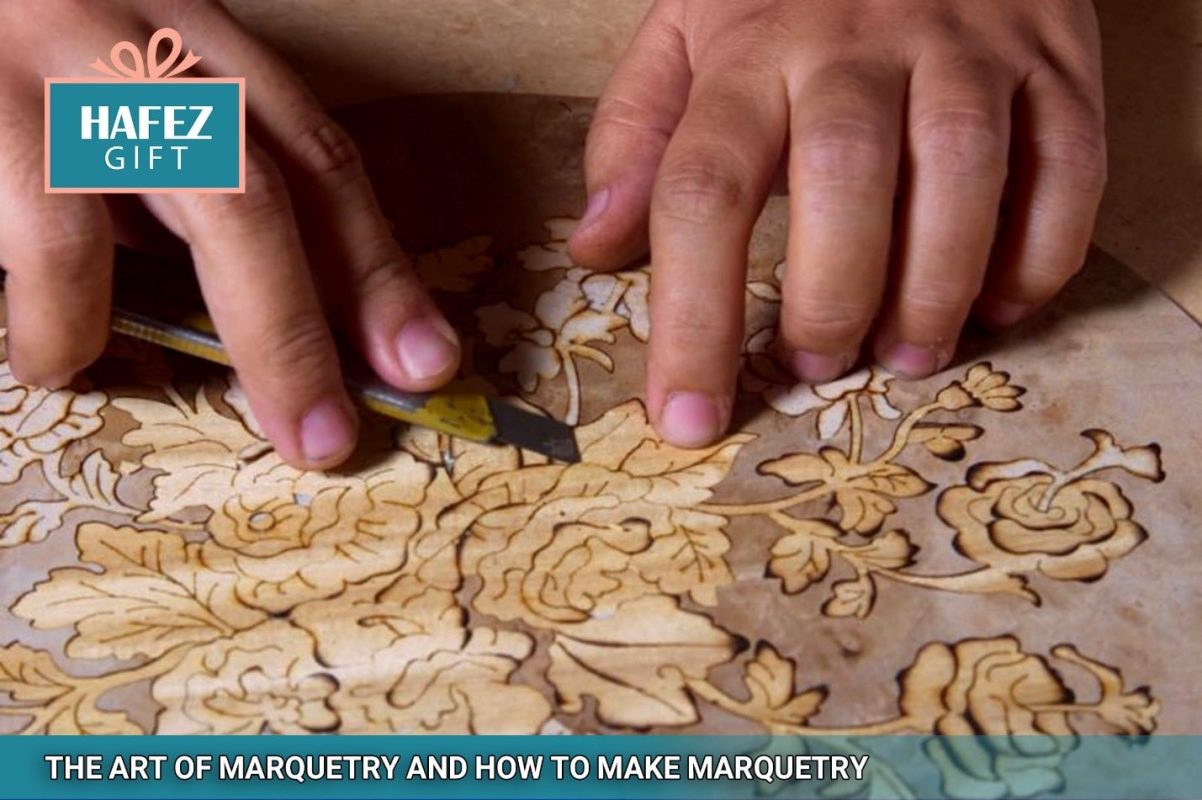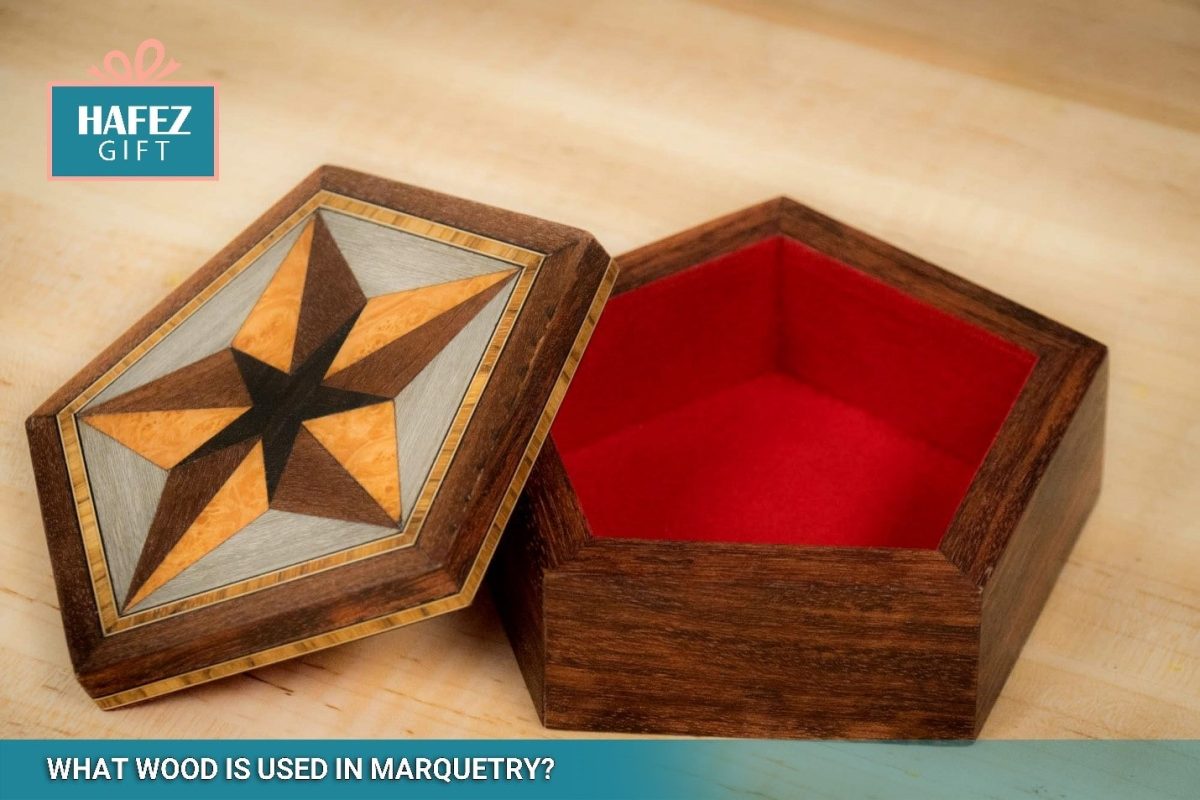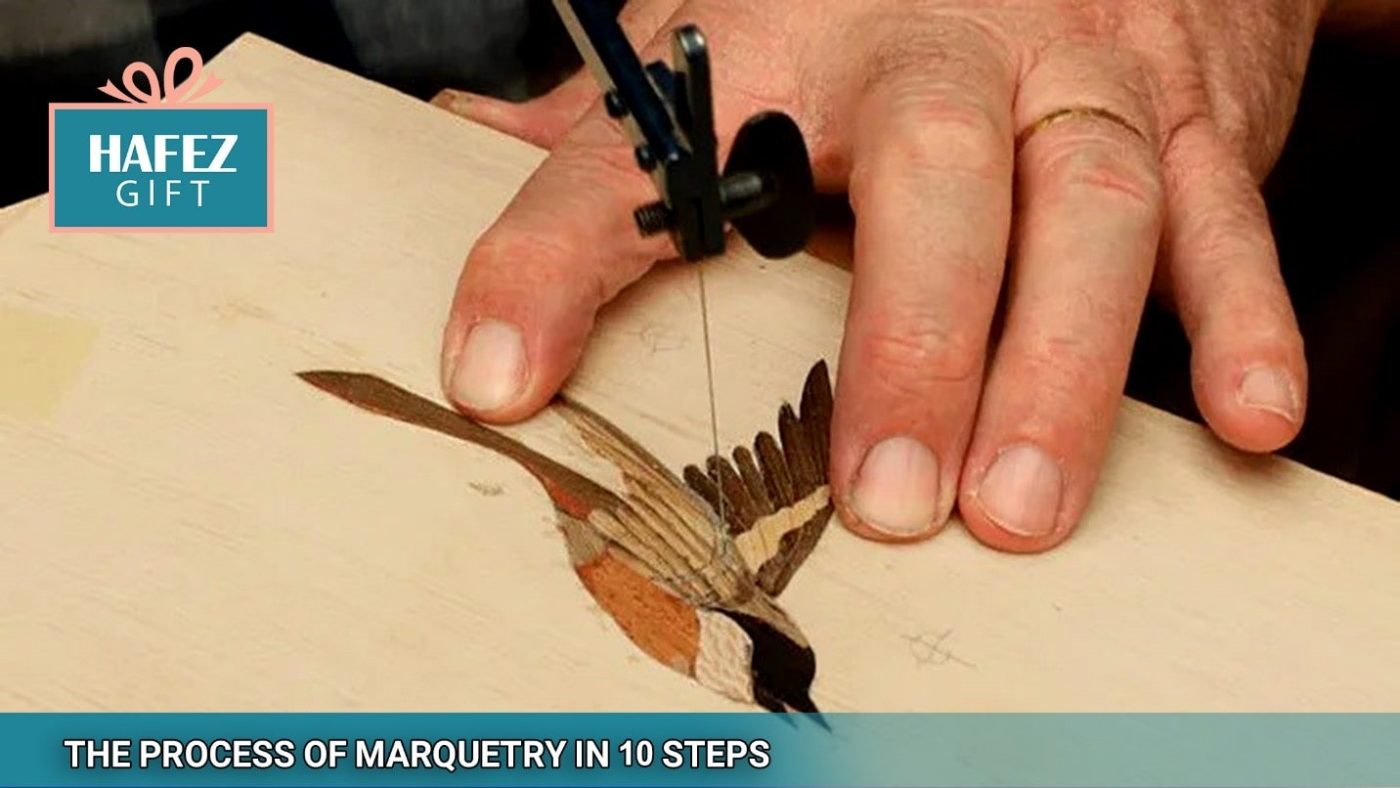The Art of Marquetry and How to make marquetry
Marquetry is an exquisite art form that dates back centuries, originating from ancient civilizations and flourishing throughout history. This meticulous woodworking technique involves creating intricate designs by assembling various wood veneers, carefully cut and inlaid to form patterns, scenes, or decorative motifs. The result is a stunning masterpiece showcasing marquetry’s beauty and craftsmanship.

What is the Technique of Marquetry?
Marquetry is the art of decorating surfaces with intricate wood inlays. It involves cutting and fitting different wood veneers, each with its own unique grain, color, and texture. These veneers are carefully arranged and glued onto a substrate, typically a wooden panel, to create stunning designs and patterns.
The art of marquetry requires exceptional precision, patience, and an eye for detail. Skilled marquetry artisans meticulously cut thin sheets of wood veneer using a fretsaw, scroll saw, or even laser technology in modern times. The veneers are then carefully fit together, creating a seamless and harmonious composition.
What Wood is Used in Marquetry?
The selection of wood plays a vital role in the beauty and longevity of a marquetry piece. Various types of wood are used, each possessing distinct characteristics that contribute to the overall aesthetic appeal. Here are some commonly used woods in marquetry:

Walnut: With its rich, dark brown color and beautiful grain patterns, walnut is a popular choice for marquetry. It provides a luxurious and sophisticated look to any design.
Maple: Known for its light color and smooth texture, maple is often used to create contrasting elements in marquetry compositions. Its fine grain allows for intricate detailing and adds depth to the overall design.
Rosewood: Renowned for its deep reddish-brown hue, rosewood offers a touch of elegance and warmth to marquetry pieces. Its distinct grain patterns and natural luster make it highly sought after.
Getting Started in Marquetry
Before diving into the intricate world of marquetry, it is essential to gather the necessary tools and materials. Here is a list of items you will need to get started:
Wood veneers: Select a variety of high-quality wood veneers that complement your design. Experiment with different colors, grains, and textures to achieve the desired aesthetic.
Substrate: Choose a stable and flat wooden panel as the base for your marquetry project. Plywood or MDF (medium-density fiberboard) are commonly used substrates due to their stability.
Fretsaw or scroll saw: These tools are crucial for cutting precise shapes and patterns from wood veneers. A fretsaw is a handheld tool, while a scroll saw is an electric-powered alternative.
Glue: Use high-quality wood glue that provides a strong bond without compromising the wood’s integrity. Choose a glue that dries clear to avoid any visible residue.
Sandpaper and sanding block: Smooth out the wood surfaces and achieve a seamless finish with different grits of sandpaper. A sanding block ensures even pressure during sanding.
Varnish or finish: Once the marquetry piece is complete, apply a protective varnish or finish to enhance the wood’s natural beauty and provide durability.

The Process of Marquetry in 10 Steps
- Step 1: Designing the Pattern
Begin by creating a detailed pattern or design for your marquetry project. Consider the dimensions, color scheme, and overall composition. You can draw inspiration from nature, geometric shapes, historical motifs, or personal creativity.
- Step 2: Choosing and Preparing the Wood Veneers
Select the wood veneers that best suit your design. Ensure that the veneers are of a consistent thickness and free from defects. Cut them into manageable sizes for easier handling during the assembly process.
- Step 3: Tracing and Cutting the Veneers
Transfer the pattern onto the wood veneers using tracing paper or carbon paper. Carefully cut along the lines using a fretsaw or scroll saw. Take your time to ensure precise cuts, especially for intricate shapes.
- Step 4: Dry Fitting the Pieces
Lay out the cut veneer pieces on the substrate without gluing them. This step allows you to assess the placement, alignment, and overall look of the design. Make any necessary adjustments before moving on to the gluing stage.
- Step 5: Gluing the Veneers
Apply a thin layer of wood glue to the back of each veneer piece using a small brush or glue applicator. Carefully place each piece in its designated position, ensuring a tight fit between adjoining pieces. Remove any excess glue immediately with a damp cloth.
- Step 6: Applying Pressure and Drying
Place a sheet of parchment paper or plastic wrap over the veneers and apply even pressure using clamps or weights. Leave the project undisturbed for the recommended drying time specified by the glue manufacturer.
- Step 7: Sanding the Surface
Once the glue has dried, remove the clamps and carefully sand the entire surface using progressively finer grits of sandpaper. This process ensures a smooth and seamless transition between the veneers.
- Step 8: Finishing Touches
If desired, add additional decorative elements such as inlays, borders, or marquetry banding to enhance the design. These details can be created using contrasting veneers, metals, or other materials.
- Step 9: Applying Varnish or Finish
To protect the marquetry piece and enhance its appearance, apply a clear varnish or finish of your choice. Follow the manufacturer’s instructions for proper application and drying times.
- Step 10: Display and Enjoy
Once the varnish or finish has fully cured, your marquetry masterpiece is ready to be displayed and admired. Frame it, incorporate it into furniture, or showcase it as a standalone work of art. The choice is yours!
Experience Persian Marquetry Artifacts at Hafez Gift Online Shop
If you are seeking authentic and exquisite Persian marquetry artifacts, look no further than Hafez Gift Online Shop. With a wide selection of beautifully crafted pieces, they offer a gateway to the rich cultural heritage of Iran. Immerse yourself in the intricate designs and delicate craftsmanship that make Persian marquetry unique. Visit their website today and explore the mesmerizing world of Persian marquetry.
Conclusion
Marquetry is a captivating art form that allows you to transform wood veneers into breathtaking works of art. By mastering the technique, selecting the right materials, and following the step-by-step process, you can embark on a creative journey that is both rewarding and fulfilling. Whether you choose
To create your own marquetry pieces or appreciate the masterpieces of skilled artisans, the beauty and intricacy of marquetry are sure to leave a lasting impression. So, embrace your creativity, unleash your imagination, and delve into the enchanting world of marquetry.
What is marquetry?
Marquetry is the art of decorating surfaces with intricate wood inlays.
What wood is commonly used in marquetry?
Walnut, maple, rosewood, ebony, and mahogany are commonly used in marquetry.
How do I get started in marquetry?
Gather the necessary tools and materials, design your pattern, and begin cutting and assembling wood veneers.
